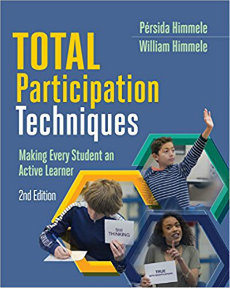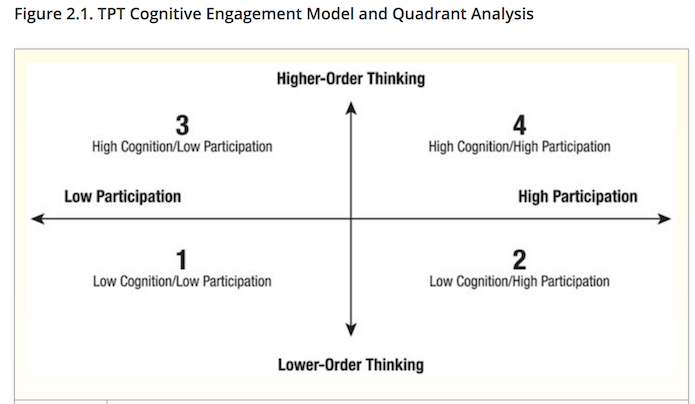Making Every Student an Active Learner
Total Participation Techniques: Making Every Student an Active Learner, 2nd Edition
By Persida Himmele and William Himmele
(ASCD, 2017 – Learn more)

I am always on the alert for ideas that might interest and activate my Social Studies classes. So when I saw a book entitled Total Participation, I grabbed it. I have read other books by this dynamic author duo and have found them to be research-based and loaded with ideas. I was not disappointed with this new find.

They reported that average students lose 90-95% of what they learn after 24 hours if they only listen to the material in a lecture or read it in a book. They lose 50% if they are involved only in a discussion But the learning loss drops to 10% if they have an opportunity to immediately use or teach the new knowledge or skill. Yet “despite the impressive amount of evidence about how little students retain from lectures, it continues to be the most prevalent method of teaching.” (David Sousa, 2006)
Key tools for maximum participation
To help increase engagement and participation as well as learning and retention, the authors give multiple examples of TPTs – Total Participation Techniques. TPTs allow all children to respond to a topic or question at the same time. To achieve this, they use two key tools: The Cognitive Engagement Model and The Ripple.
The Cognitive Engagement Model is used to guide our instruction to ensure that we have a way to analyze the activity sequence in our lessons. They suggest that we look at our lessons in terms of high/low cognition and high/low participation.

The Ripple is a method that makes sure that every child has a chance to respond to a prompt. It starts as an individual response, moves to a small group response leading finally to a whole group share. By giving each student time to think and formulate an answer they are all ready with ideas to enter the discussion.
New TPTs in the second edition
The Himmeles have compiled an incredible list of TPTs. They explain what each activity is and how it works. For each activity they include sections called “How to Ensure Higher-Order Thinking” and “Pause to Apply.” The first gives hints on increasing rigor with more thinking challenges. The Pause to Apply sidebar gives more ideas on how to use the activity.
For example, “Ranking” is one of the TPTs in the On-the-Spot TPTs chapter. To develop deeper thinking, it was suggested to always require justification of the rankings. To apply it further, you can have students rank the most influential or essential feature or concept in most content areas.
There are also chapters on TPT Hold-Ups and one that uses movement. Chapters 7 and 8 are TPTs to Guide Note Taking and Concept Analysis and TPT Wrap-Ups respectively. A teacher can even use them as a formative assessment tool. There seems to be no end to the multiple uses of total participation techniques.
Visit the Himmeles’ TPT website to explore
videos and other explanatory content.
______________________
Joanne Bell is a middle school teacher at St. Joseph Elementary School in Cottleville, Missouri. She currently teaches social studies to sixth and seventh graders, but has spent most of her 34 years in the elementary grades.


































